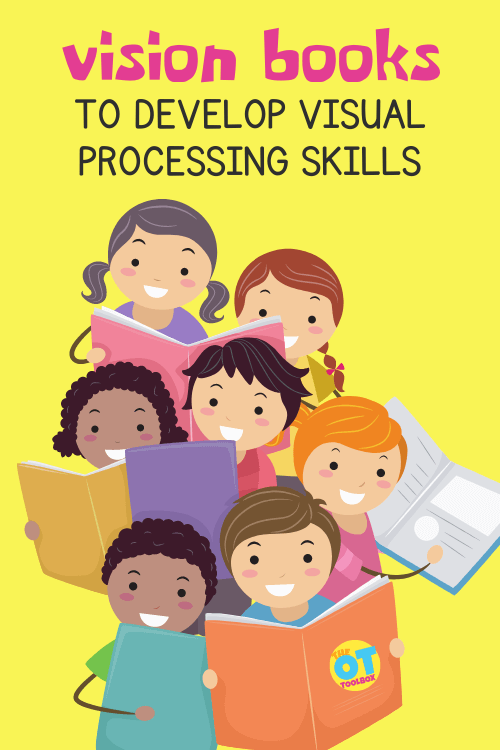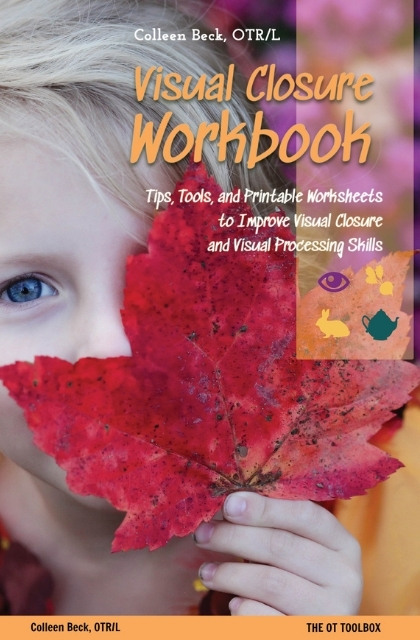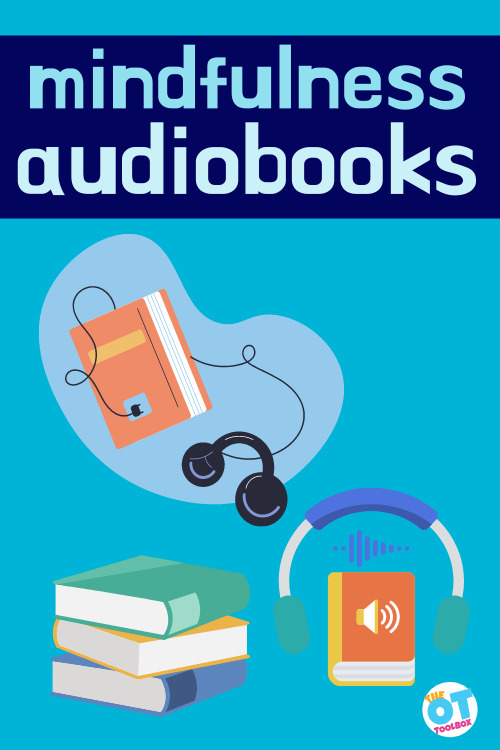In this post, I have highlighted references to vision books that can specifically be used in therapy interventions to support the development of visual processing skills. These are the Top 9 Books for addressing vision concerns, that might be incorporated into visual therapy, or occupational therapy activities. Each of these visual skill building books covers aspects of visual perception, visual processing, and visual motor skills.
Start by reading, “Visual Problems or Attention” to help decipher the cause of visual processing difficulties.
After reading Visual Problems or Attention, check out the Visual Screening Packet available on the OT Toolbox to further assist in diagnoses and treatment.
For more information on vision skills, check out this post from the OT Toolbox archives.

Vision Books
Looking for books on vision, visual motor integration and visual perceptual skills? Check out the list of books below that are chock full of information and treatment ideas!
Many of these books have reproducible pages, or can be laminated/placed into plastic sleeves to be reused.
Vision Book: Eyegames
The list of vision books below are linked to Amazon affiliate links for ease of searching, however they can be also found by googling the titles.
An OT and Optometrist Offer Activities to Enhance Vision! (affiliate link) By Lois Hickman and Rebecca Hutchins is an easy and fun vison book with games and exercises for developing visual skills.
This vision book is an easy read about vision deficits, and how they impact function. It has a checklist of red flags to be on the lookout for. There are also loads of great therapy activities to target each skill deficit. Activities are geared for a variety of function levels, along with easy task gradation. Activities are designed to be completed in the home, clinic, or school settings.
Vision Book for Visual Tracking Exercises
Visual Perception, Visual Discrimination & Visual Tracking Exercises for Better Reading, Writing and Focus (affiliate link)
The next set of vision books are created by Bridgette Sharp, and Bridgette O’Neil. These books make for a great set of tools to have in your bag.
The Visual Tracking Exercises Book is a beginner book for developing tracking skills. As a bonus, you can use this with learners who are working on left/right awareness as well. Worksheets are varied with numbers, shapes, patterns, color, and black and white fonts, to help keep things interesting.
Vision Book for Scanning Skills
Advanced Visual Scanning Exercises (affiliate link)
As it says in the title, this visual perception book is for your advanced learners who are continuing to work on strengthening their eye muscles, gearing up for chapter book reading, and increased desk work. Patterns become more complex, and are in black and white only.
It can be helpful to read more on what is visual scanning and check out the red flags section and then use this vision book if needed.
Visual Scanning Exercises for Young Students (affiliate link)
This visual scanning beginner book has a variety of simple grid patterns with large colorful pictures for younger children, beginning learners, pre-readers, and children who are behind in reading readiness due to tracking and scanning issues. The images are large, colorful, and have plenty of variety to keep them engaged in therapy.
Vision Books, Visual Scanning for Students (affiliate link)
This Ready to Scan vision book is for more advanced scanners, or for kids/learners who are skipping lines when reading or copying. It’s a great resource for building endurance and eye muscle strength. As a bonus, use the patterns for reversal training and directionality!
BIG BOOK: Beginners, Intermediate & Advanced Visual Scanning Exercises (affiliate link)
Like it’s title says, this book has something for everyone. This is a great place to start your toolbox for visual skills. Patterns work through a progression, starting with large images, moving onto smaller images. They present a variety of pictures and geometric shapes, both in color and black/white. This book is a great place to create home programs with and homework from each session.
Vision Book for Visual Tracking
Vision books, Visual Tracking Exercises with 100 High Frequency Sight Words (affiliate link)
If you’re looking to change it up from geometric patterns and pictures, this book is a great option. The book consists of a variety of exercises using sight words. Use the pages to work on discrimination and word shape training as well.
Start by reading up on what visual tracking is and then go from there with this vision workbook.
Visual Skills Book for Reversals
Letter reversals are related to vision skills. You’ll want to start by reading more on p and q reversals or b and d reversals. Others who write letters backwards can benefit as well.
The visual skills book, Brain Training for Reversals, is a brain training vision book consists of exercises specifically for reversals of b-d-p-q. Exercises range in complexity to address all skill levels. These brain training worksheets can also be used for scanning, to practice reading, and directionality. You can also use these worksheets similar to an eye spy game, by having the child look for all of one letter.
Visual Discrimination Book
Visual discrimination is a visual skill that impacts reading, writing, math, comprehension, and learning.
The Visual Discrimination book is great for grades 2-8 and focuses on finding patterns and solving problems through the use of colorful geometric patterns and images. This is great for critical thinking skills, along with working on spot the difference (visual disclination) tasks.
Book 9 is a higher level book, so save it for your older, more high functioning learners, or adult learners who are working at this reading level.
Spot the Difference Vision Books
Another great resource are “spot the difference” books! (affiliate link) There are hundreds of spot the difference books to choose from. These books not only address visual discrimination, but can also be used to work on following directions, scanning, item location in a busy environment, and general visual processing skills.
The OT Toolbox is offering a FREE visual perception packet to download and use with your learners.
Visual Closure Book
The Visual Closure Workbook is a 65 page digital file designed to impact visual perceptual skills for reading comprehension and efficiency, and the ability to visualize a complete image or feature when given incomplete or partial information.
Visual closure skills are essential for reading with fluency. It’s necessary for written work to happen without concentrating on each letter’s lines and curves. Visual Closure allows us to comprehend words and letters without actively assessing each line.
Challenges with puzzles, identifying sight words, copying in handwriting, math tasks, and other reading or writing activities require visual closure skills.
This workbook includes:
- Information on visual closure and visual processing
- Red Flags Indicating a Visual Closure Problem
- 15 ways to use the workbook and strategies
- More Visual Closure Activities (use these tactics to grade the visual closure activities to meet individual needs, challenge, users, and support the development of skills)
- Workbook – Level 1
- Workbook – Level 2
- Workbook – Level 3
This workbook is designed to provide background information on visual closure as a tool for understanding this visual perceptual skill. It’s a guide for advocating for common visual closure difficulties through the included screening tool broken down as “red flags”.
NOTE* The term, “learner” is used throughout this post for readability and inclusion. The previous information is relevant for students, patients, clients, preschoolers, kids/children of all ages and stages, or whomever could benefit from these resources.

Contributor: Kaylee is a pediatric occupational therapist with a bachelors in Health Science from Syracuse University at Utica College, and a Masters in Occupational Therapy from Utica College. Kaylee has been working with children with special needs for 8 years, and practicing occupational therapy for 4 years, primarily in a private clinic, but has home health experience as well. Kaylee has a passion for working with the areas of feeding, visual development, and motor integration.





